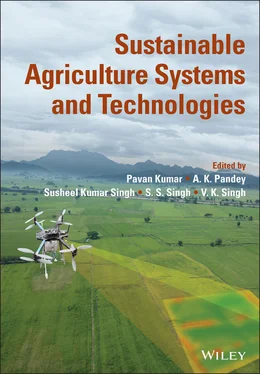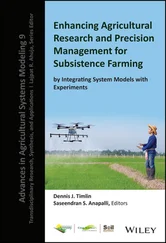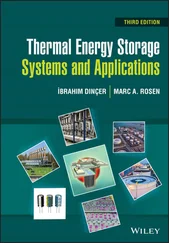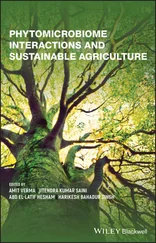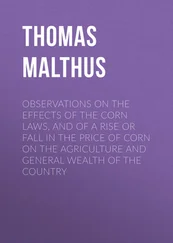Sustainable Agriculture Systems and Technologies
Здесь есть возможность читать онлайн «Sustainable Agriculture Systems and Technologies» — ознакомительный отрывок электронной книги совершенно бесплатно, а после прочтения отрывка купить полную версию. В некоторых случаях можно слушать аудио, скачать через торрент в формате fb2 и присутствует краткое содержание. Жанр: unrecognised, на английском языке. Описание произведения, (предисловие) а так же отзывы посетителей доступны на портале библиотеки ЛибКат.
- Название:Sustainable Agriculture Systems and Technologies
- Автор:
- Жанр:
- Год:неизвестен
- ISBN:нет данных
- Рейтинг книги:5 / 5. Голосов: 1
-
Избранное:Добавить в избранное
- Отзывы:
-
Ваша оценка:
- 100
- 1
- 2
- 3
- 4
- 5
Sustainable Agriculture Systems and Technologies: краткое содержание, описание и аннотация
Предлагаем к чтению аннотацию, описание, краткое содержание или предисловие (зависит от того, что написал сам автор книги «Sustainable Agriculture Systems and Technologies»). Если вы не нашли необходимую информацию о книге — напишите в комментариях, мы постараемся отыскать её.
A robust treatment of traditional and new techniques in sustainable agriculture Sustainable Agriculture Systems and Technologies,
Sustainable Agriculture Systems and Technologies
Sustainable Agriculture Systems and Technologies — читать онлайн ознакомительный отрывок
Ниже представлен текст книги, разбитый по страницам. Система сохранения места последней прочитанной страницы, позволяет с удобством читать онлайн бесплатно книгу «Sustainable Agriculture Systems and Technologies», без необходимости каждый раз заново искать на чём Вы остановились. Поставьте закладку, и сможете в любой момент перейти на страницу, на которой закончили чтение.
Интервал:
Закладка:
2.4 Reducing Emission of Greenhouse Gases
The good agronomic practices (GAPs), such as, conservation tillage, organic nutrient sources along with inorganic nutrient sources, weeds, insect pest, and disease management along with adequate irrigation water management in diversified production system can greatly reduce greenhouse gases in the atmosphere. The selection of climate smart crops which require comparatively lesser nutrient, water from production system and have lesser impact of biotic and abiotic stresses are the essential components of the crop diversification. In this category, oilseeds, pulses are good examples; for these crops, the GHC emission is also less. Conservation tillage and deficit irrigation can also substantially minimize CO 2and N 2O emission. Appropriate use of the crop residue and complete banning of its burning reduces the generation of CO 2, N 2O, and CH 4to a significant extent. Crop diversification ensures greater functional biodiversity to cropping systems and it also regenerates biotic interactions underpinning yield‐supporting ecosystem services (Rathore and Shekhawat 2020). It embraces a variety of practices encompassing the management of crops, noncrop habitats, soil, and landscapes (Cardinale et al. 2012; Wagg et al. 2014; Renard and Tilman 2019; Tamburini et al. 2020).
2.5 Effect of Technology‐Induced Crop Diversification
The advancement in technological development especially development of high yielding and biotic, abiotic resistant varieties, of wide window of growing period, CA‐based systems, land configuration, and other improved agronomic management, along with increasing value addition and better postharvest handling are the encouraging forces for promotion of crop diversification in different parts of the country. Green revolution technologies intensified cropping system in irrigated areas in favor of rice and wheat and other crops got less acreage due to low productivity and less profitability. This enhanced total output of cereals tremendously but also created second generation problems like intensive use of chemical fertilizers, pesticides, etc., led to pollution of resource base, overexploitation of groundwater resulted in depletion of ground water, salinization. This made urgent call for crop diversification to achieve sustainable high levels of productivity with conservation of natural resource base and to secure higher profitability to the farmers in the long run. Rice–wheat acreages increase substantially in Indo‐Gangetic plains (IGPs) zone due to better irrigation infrastructures and higher response to the applied inputs for long time. Also, the government support system was developed over the period to safeguards the interest of the cereal growers through better pricing, input supply, and other incentives like increased availability of quality seed of improved varieties to the farmers. Later the stockholders including the farmers realized the faults in the ongoing cereal‐based system and promoted crop diversification in originally green revolution areas.
The technological development in all sectors of crop production also promoted farmers awareness to explore for crop diversification. High yielding varieties, suited to different ecologies, were developed in oilseeds, pulse crops, and millets and improved agronomic practices. These also helped in harnessing higher productivity from the diversified cropping system. The better minimum support price of the millets, oilseeds, and pulses also help in increasing the farmers’ awareness for bringing more and more area under crop diversification. The inclusion of leguminous crop not only helps in maintaining optimum soil fertility but also helps in minimizing the impact of biotic and abiotic stresses among the crop plants due to alteration in host–pathogen relationship. It helped in maintaining over all ecological balance in agriecosystem.
The date of sowing is considered as the simplest agronomic management to minimize the impact of climate change/variability on crop growth and productivity. It will be helpful to make contingency planning to fit proper variety to extreme weather conditions like raising and decreasing temperatures, varying rainfall and other weather components. The climate smart varieties would be used in large scale on farmers' field. The diversification of cereal‐based cropping systems with the crops such as oilseed, pulse, and forage crops, is another option for minimizing biotic and abiotic stresses. The pathogenic cycles could be broken up through crop substitution (Singh et al. 2002, 2020; Rathore and Bhatt 2008). Consistent practicing of monocropping resulted in loss of soil fertility, decline of soil health, factor productivity decline and lowering crop productivity even under high productivity areas (Saha et al. 2012). Conservation tillage also promotes greater soil biodiversity thereby leading to more biotic stresse suppression. Proper pest management is a permanent challenge to the farmers, and it is a very important ecosystem service, which can be restored through crop diversification. The erosion of genetic diversity led to an increase in crop disease occurrence. Greater varietal and species richness reduce the spread of disease in agricultural systems. Habitat management in agricultural systems is an effective means to enhance natural enemies. These have been developed for effective application in crop, at farm, and few of these are reported be very economically useful for the farmers. Gurr et al. (2003). The diversity of crop species within the agro ecosystem consequently offers long‐term pest suppression by building up potential natural enemies for any pest outbreaks.
2.6 Congenial Conditions for Crop Diversification
India is a highly diversified country in terms of climatic conditions, soil types, topography, and other agro climatic conditions. Therefore, the ICAR has divided the whole country into 15 agroclimatic zones. This help for wider cultivation of number of crops in the country. India is also one of the mega biodiverse countries and many of the crops originated in India. Traditionally, the farmers were practicing a diversified cropping system by inclusion of many crops during different crop season. But over the period, after green revolution and increasing government efforts and food demand, lot of emphasis has been paid only to cereal‐based system. This resulted in growing of one or two crops only.
Diverse agro‐climatic conditions
Diverse weather within a year
Huge market
Great potential for processing and value addition
Large number of crops, including underutilized
Figure 2.3indicated that diverse bioclimatic zones of India along with different agroclimate favors for promotion of crop diversification. For achieving a very useful diversification plan, there is a need to develop intensive cropping systems with diverse crops. Furthermore, these agro ecological regional classifications indicate very systematically the existence of diverse soil, climatic, and growing conditions and based on these diverse conditions, across the country the suitable crop diversification plans have been developed by various experts. There is a need to popularize these time‐tested crop diversification plans vigorously in the country at farmers’ fields to get all the benefits to the small and marginal farmers in particular.
2.7 Crop Diversification and Composition
It is very pertinent to suitably identify the nature of composition of crops for fool proof crop diversification plans in a specific locality. Area shifts and crop pattern changes can lead either to crop specialization or to crop diversification. Green Revolution technologies led to cereal centered specialization in large part of the country. But, later when increased productivity of food grains, especially cereals, made it possible to allocate more area to other crops such as oilseeds with a severe supply shortage, the specialization tendency witnessed earlier has given room for overall crop diversification. Crop diversification can be practiced successfully in spatial and temporal dimensions.
Читать дальшеИнтервал:
Закладка:
Похожие книги на «Sustainable Agriculture Systems and Technologies»
Представляем Вашему вниманию похожие книги на «Sustainable Agriculture Systems and Technologies» списком для выбора. Мы отобрали схожую по названию и смыслу литературу в надежде предоставить читателям больше вариантов отыскать новые, интересные, ещё непрочитанные произведения.
Обсуждение, отзывы о книге «Sustainable Agriculture Systems and Technologies» и просто собственные мнения читателей. Оставьте ваши комментарии, напишите, что Вы думаете о произведении, его смысле или главных героях. Укажите что конкретно понравилось, а что нет, и почему Вы так считаете.
